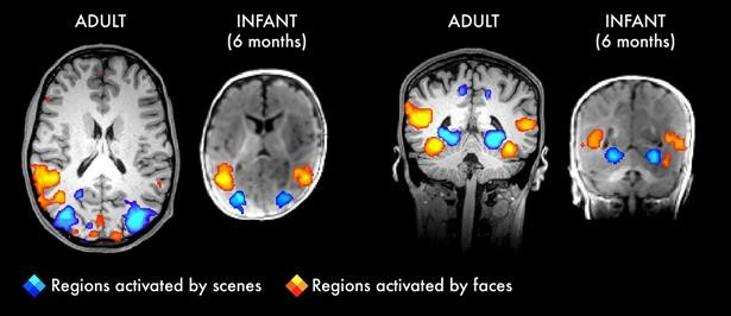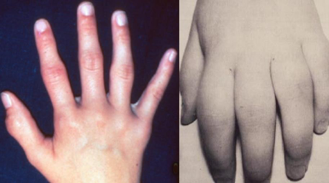Juvenile arthritis should be suspected in a child who exhibits
frequent fractures.
joint swelling and pain lasting longer than 6 weeks.
lurching and abnormal gait with limited abduction.
increased joint mobility.
The Correct Answer is B
Juvenile arthritis should be suspected in a child who exhibits joint swelling and pain lasting
longer than 6 weeks. Juvenile arthritis refers to a group of chronic inflammatory conditions
that affect the joints in children and adolescents. Persistent joint swelling and pain are
common symptoms of juvenile arthritis and are often accompanied by other signs such as
morning stiffness, limited range of motion, and joint warmth.
, frequent fractures in (option A) is not correct because it, is not typically associated with
juvenile arthritis. Fractures are more commonly associated with conditions affecting bone
strength, such as osteoporosis or certain genetic disorders.
lurching and abnormal gait with limited abduction in (option A) is not correct because it,
may be seen in certain musculoskeletal conditions or hip joint abnormalities, but it is not
specific to juvenile arthritis.
increased joint mobility in (option D) is incorrect because it, is not typically associated with
juvenile arthritis. In fact, joint stiffness and limited range of motion are more characteristic of
this condition.
Nursing Test Bank
Naxlex Comprehensive Predictor Exams
Related Questions
Correct Answer is A
Explanation
The scenario describes a 14-year-old male who seems to be always eating, but his weight is appropriate for his height. In this case, it is important to reassure the parents that the behaviour may not necessarily be a cause for concern.
Option A provides an accurate response by explaining that for weight gain to occur, the individual would need to consume an excessive number of calories. Since the adolescent's weight is appropriate for his height, it suggests that his caloric intake is likely balanced and not excessive.
suggesting that he is substituting food for unfilled needs in (option B) is incorrect because it, is speculative and may not be accurate without further assessment or evidence. It is important to avoid making assumptions about underlying psychological or emotional reasons for increased eating without more information.
stating that this is normal due to an increase in body mass during this time in (option C) is incorrect because it, is not necessarily applicable to the scenario. While it is true that adolescents experience growth and changes in body composition during this period, it does not directly explain the constant eating behaviour described.
suggesting that this behaviour is abnormal and indicative of possible future obesity in (option D) is incorrect because it, may be premature and unsupported based solely on the information provided. It is essential to avoid making predictions or assumptions about future health outcomes without proper evaluation.
By providing the parents with information about the caloric intake required for weight gain and reassuring them that their son's eating behaviour may be within a normal range, the nurse can address their concerns and provide accurate guidance. If the parents have further concerned or questions, it may be appropriate to refer them to a healthcare provider for a more comprehensive assessment.
Correct Answer is A
Explanation
The statement that accurately describes the difference between the central nervous system (CNS) of a child and an adult is option A. The brain of a term infant weighs less than half of the weight of the adult brain. The brain undergoes significant growth and development during childhood and continues to develop until early adulthood. At birth, the brain is only a fraction of its adult weight, and it continues to grow and mature over time.
infant has 150 mL of cerebrospinal fluid (CSF) compared with 50 mL in the adult in (option B), is incorrect. The volume of CSF in the CNS is not a significant difference between children and adults.
coordination and fine motor skills develop as myelination of peripheral nerves progresses in (option C), is an incorrect statement. Myelination is an ongoing process that occurs throughout childhood and contributes to the development of coordination and fine motor skills.
papilledema is a common manifestation of increased intracranial pressure (ICP) in the very young child in (option D), is not correct. Papilledema refers to swelling of the optic disc and is not commonly seen in very young children. Signs of increased ICP in young children may present differently compared to adults and can include altered mental status, irritability, vomiting, and changes in vital signs.

Whether you are a student looking to ace your exams or a practicing nurse seeking to enhance your expertise , our nursing education contents will empower you with the confidence and competence to make a difference in the lives of patients and become a respected leader in the healthcare field.
Visit Naxlex, invest in your future and unlock endless possibilities with our unparalleled nursing education contents today
Report Wrong Answer on the Current Question
Do you disagree with the answer? If yes, what is your expected answer? Explain.
Kindly be descriptive with the issue you are facing.

